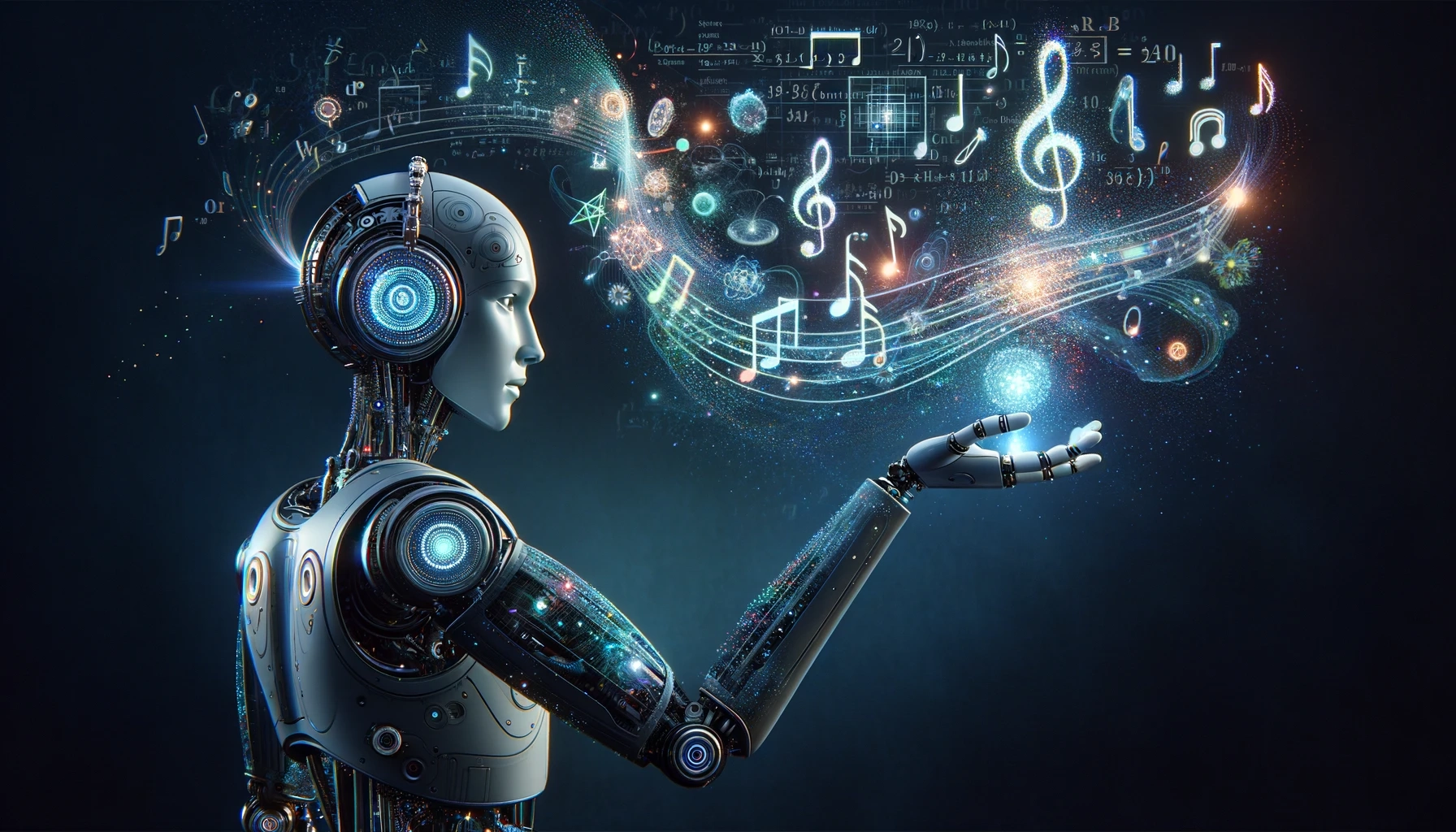In the tapestry of today’s digital revolution, artificial intelligence (AI) weaves a pattern that extends far beyond the realms of binary logic and computation, into the intuitive and traditionally human domain of creativity. This blog post, a sanctuary for the creatively curious, peels back the curtain on how AI is not only adapting to the creative industries of music, art, and filmmaking but also enhancing them in unimaginable ways.
The Creative Companion: AI in the Artistic World
The fusion of AI and creativity heralds a new era where technology becomes a collaborator rather than just a tool. AI’s role in the creative industries is multifaceted — acting as an assistant, a muse, and sometimes, even an artist.
Harmonizing with AI: The New Symphony in Music
In the realm of melodies and harmonies, AI is now composing music that resonates with the complexities of human emotion. Tools like Google’s Magenta and IBM’s Watson Beat have demonstrated that algorithms can create music that stirs the soul, blurring the lines between the artist and the artifact. These platforms analyze vast datasets of music to recognize patterns and styles, then compose original pieces that can mimic genres from classical to country.
For the music enthusiast, AI represents an expansion of the sonic landscape, offering personalization to one’s auditory taste that was hitherto inconceivable. The question no longer is whether AI can create music, but how musicians can harness this technology to push the boundaries of their creativity.
AI as the Modern Artist: Redefining Visual Aesthetics
The brushstrokes of AI in art have colored the canvas with possibilities that have radically transformed the visual aesthetics. Through techniques like neural style transfer, AI algorithms can replicate the style of famous painters, applying it to new images and even creating entirely new pieces of art. Apps like Prisma have popularized this technology, enabling users to reimagine their photos in the styles of iconic artists.
But AI’s role in art transcends mere imitation. It has birthed new art forms and narratives, facilitating artists to explore algorithmic complexities and generate works that are both evocative and unprecedented. AI-generated art challenges our perception of creativity and authorship, inviting us to reconsider the essence of art itself.
Cinematic Evolution: AI’s Directorial Debut in Filmmaking
The silver screen is no stranger to the marvels of AI. From pre-production to post-production, AI is reinventing filmmaking. It assists in scriptwriting by suggesting plot twists and character development based on popular tropes. Editing software powered by AI, like Adobe Premiere Pro’s Sensei, streamlines the post-production process, offering intelligent cropping, audio mixing, and even creating trailers that capture the essence of the movie.
In an industry where time is as valuable as artistic vision, AI’s contribution to filmmaking is invaluable. It allows directors and editors to focus on storytelling and emotional depth while the algorithms handle the tedium of technical processing.
Illuminating the Creative Process: Case Studies of AI in Action
The real-world application of AI in creativity shines through in numerous case studies. AIVA, an AI music composer, has been recognized by the music society SACEM. Google’s DeepDream has created surreal landscapes that have adorned galleries and sparked conversations about the nature of consciousness and perception.
Such collaborations showcase AI’s potential to be a powerful creative partner, enhancing human talent and providing the means for new artistic expressions.
Ethics and Creativity: Steering AI Towards Responsible Innovation
Yet, as with any technological advent, the rise of AI in creativity raises profound ethical questions. Can AI infringe upon the intellectual property of artists? What does it mean for the future of creative jobs? Ensuring that AI respects the nuances of human artistry without overstepping its bounds is a conversation that spans legal, social, and economic dimensions.
Guiding AI towards responsible innovation is imperative. Transparency in how AI tools are designed and used, alongside safeguarding the rights and roles of human artists, is crucial in nurturing a symbiotic relationship between AI and human creativity.
Preparing for an AI-Infused Renaissance
For those looking to embrace AI in their creative endeavors, the path forward involves embracing AI literacy and staying abreast of the technological trends. Aspiring artists and creators can start by exploring AI tools that relate to their field, attending workshops, or engaging in communities that specialize in AI and creativity.
AI as the Eternal Apprentice
AI, in its myriad forms, continues to serve as an apprentice in the realm of human creativity, enhancing and expanding our artistic capabilities without replacing the unique spark of human ingenuity. As we push further into this exciting collaborative frontier, the integration of AI in art, music, and film heralds a new era of creative possibilities.
We are on the brink of a transformative journey where AI doesn’t spell the onset of a dystopian future but stands as a collaborator in sculpting previously unimaginable worlds. If you’re keen to learn how AI can augment your creative pursuits or if you have thoughts about the intersection of technology and creativity, we invite you to share your views in the comments below.
Reach out to us for more information on how to integrate these cutting-edge technologies into your work. Let’s embrace this new age of creativity together and see what worlds we can create. Join the conversation and let’s innovate the future of creativity!

